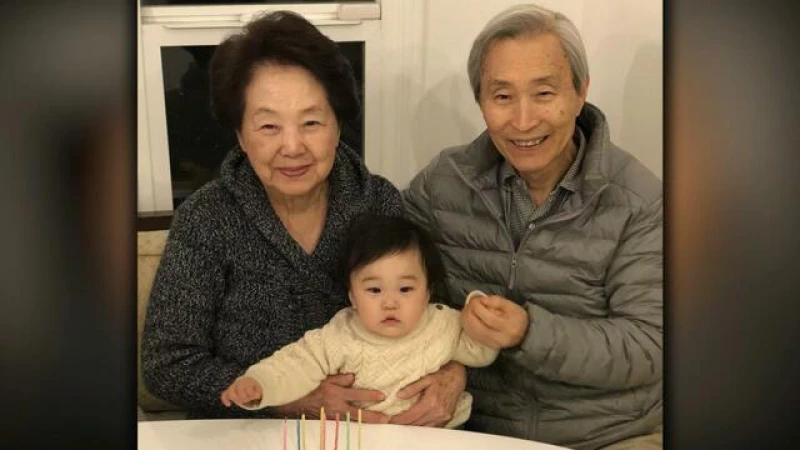By 2030, an estimated 10,000 Americans will reach the age of 65 daily, shining a spotlight on the nation's readiness for elder care, a duty that frequently lands on the shoulders of their adult offspring. This has led to the emergence of the term "sandwich generation," which refers to adults who are tasked with looking after their elderly parents while also raising their own children.
One individual caught in this predicament is Lisa Ling, a CBS News contributor who is part of the sandwich generation herself. Ling's family is among the nearly 80 million Americans who are simultaneously caring for children and aging parents.
Ling's husband, Paul, is usually involved in getting their two young daughters prepared for school. However, there are days when he has to rush to aid his 92-year-old mother, Grace, with her medical appointments. Grace has experienced multiple visits to the emergency room and rehabilitation stays in recent months. Mornings in the Ling household are often described as "hectic" as they navigate the responsibilities of tending to both parents and children.
"At a certain point, your parents become like kids," Ling remarked.
Lauren Shin is another caregiver. Since her parents moved in with her in 2017, Shin has navigated the complexities of her mother's deteriorating health and eventual Alzheimer's disease diagnosis while raising two young children.
"In the first few months, it was still okay. It just seemed like a lot of nonsense talking from her, but then there was a switch. She would tell me to shut up with profanity words. Sometimes she would look at me as if she could kill with her eyes, and I would say something, and she'd be like, you don't know what you're talking about," said Shin.
Alzheimer's disease can lead to delusions and sometimes violent behavior, according to health experts, which makes care challenging. At first, it was Shin's father who took it on, spoon-feeding her and talking to her.
"There was not a moment that he wasn't by her side," Shin said.
After two years, her mother's condition continued to decline. But it wasn't until Shin gave birth to her second child that she knew something had to change.
"It was hard. I had postpartum. I was trying to heal and take care of a newborn and a 6-year-old, and I didn't know how to handle all that at first. So it was a lot of nights of screaming and crying into my pillow," said Shin.
Shin's family made the decision to move her mother into a memory care facility for her safety and well-being. They found a suitable place in Anaheim, California, just an hour away from their home. The facility caters to a predominantly Korean American population, which has helped Shin's mother feel more at home. While the adjustment period was challenging, Shin shared that her mother has now made friends and settled into her new environment.
Part of the financing for the move came from California's Medicaid program, known as Medi-Cal, which provides support for individuals with limited income. The cost of memory care facilities in many states can exceed $10,000 per month, making it difficult for families to afford without assistance.
Nicole Jorwic, representing the organization Caring Across Generations, cautioned that not everyone can rely on Medicaid to cover such expenses. Due to lengthy waitlists and strict financial requirements, many individuals may not qualify for this support. Jorwic highlighted that there are currently over 750,000 people on the waitlist for these services.
Jorwic explained, "Medicaid eligibility criteria can vary by state, with limitations on the number of individuals served and the amount of assets allowed. This often forces people to deplete their savings or live in poverty in order to access long-term care."
Meanwhile, Ling's family has managed to care for Paul's mother at home, while Ling's father spent his final days in a facility funded by his government pension and savings. Unfortunately, the financial resources would have only covered the care for two more years, emphasizing the financial challenges many families face when seeking long-term care options.
Shin and her family are grateful to have found a safe place for her mom. But as a sandwich caregiver, Shin still has young kids and an aging father at home. However, she said she has hope that things will improve and offered advice for those in her situation.
"It does get better," she said. "The kids will get older, they will become a little bit more self-sufficient, and they won't need you as much. And the elderly, I just want people to know they don't want to be the ones needing help either. And this is my turn to give back for all their hard work."
Caregiving Resources:
- Caring Across Generations
- National Alliance for Caregiving
- Rosalynn Carter Institute on Caregiving
- HFC
- National Council on Aging
- Justice in Aging
The new "CBS Mornings" series "Cost of Caregiving" explores the challenges of caring for America's aging population. While some have made the difficult decision to move their aging parents into a facility, for many, this option is out of reach due to affordability, qualification criteria, or limited availability at these facilities. Tune in for more on this topic this Thursday.







